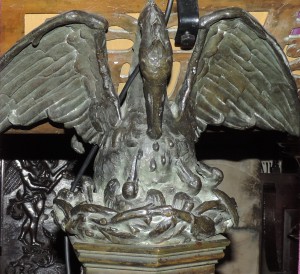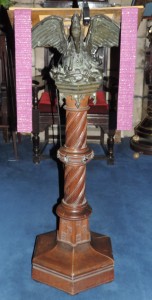Bells have been used over the centuries at times of rejoicing, to warn of danger and in times of mourning. Most bells are located in churches where they have an additional use – to call the faithful to worship. With a known history spanning more than 8 centuries and its central location, it is hardly surprising that the Kirk of St Nicholas has a story to tell about its bells. Exactly when the first one was installed is not known. There certainly was one already there in 1351 when two new bells were added. They were dedicated to St Mary and St Laurence (the latter bell often known as ‘Auld Lowrie’). How they came to be gifted is intriguing. Tradition suggests that Provost William de Leyth [Leith] got into a quarrel with Baillie Catanach of Barkhill (near Berryden) which resulted in the death of the latter. In expiation for the crime, the two bells were given by William Leyth. The larger, Auld Lowrie, was about 4 feet across at the mouth and 3½ feet high, weighing about 4,000lb (1.8 tons). It must have been quite a feat getting it up the spire into position! Up to the Reformation it was only tolled on the anniversaries of the death of three successive chief magistrates, Fyffe, Roull and Davidson.
Auld Lowrie was recast in 1634 and continued in use with the other two bells until 1874. Additional bells were installed in 1794, 1802 and three in 1858 making a peal of eight. These were hung for change ringing i.e. chimed by swinging the bell using a rope. Complex permutations of sounding the bells, called changes are possible. These bells were sometimes used in this way and were reputed to have a very fine quality of sound.
The story of the drastic fire of 9th October 1874 was related in the Blog of 10th October 2015. All the bells were lost during the collapse of the spire. However, metal from the bells was recovered subsequently. Some was recast as bells, but some was used to make a lectern in the shape of a Pelican. This was used in the former East Kirk until 2004 and is now located in the West Kirk. The wooden stand is also made from wood recovered after the fire. It is shown in the accompanying photographs.

